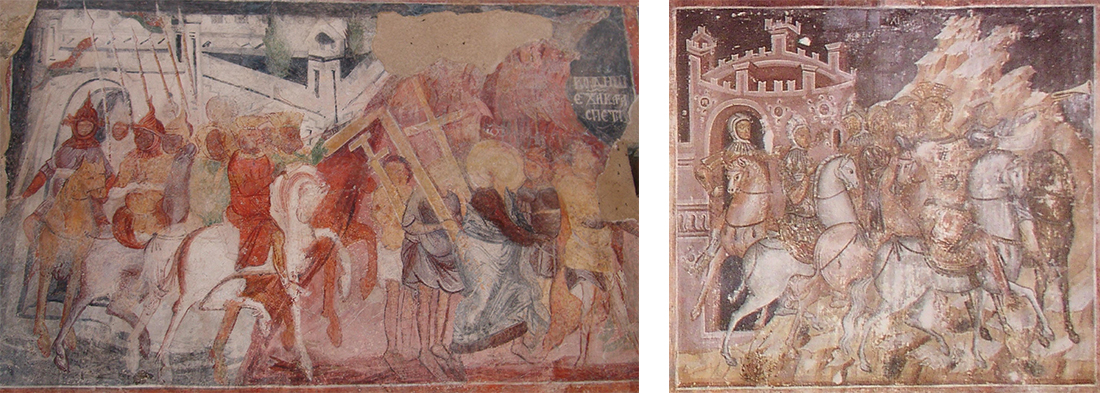It is a graveyard church situated near the entrance of the village. Its architecture follows the layout of the small one-nave, one-apsis church with semi-cylindrical vault. It was built probably in late 16th – early 17th century, and later, in the 19th and early 20th century it was extended to the west.
The murals in the sanctuary and the naos are dated most generally to the17th century. There is no historical evidence about the church and the ktetor’s inscription, which was likely located on the western wall of the naos, was destroyed during the extension of the naos in the 19th century.
Various hypostases of Christ, Ascension and Transfiguration, flanked from the north and from the south by depictions of prophets, are represented in the zenith of the vault. The images of liturgical and Eucharistic meaning, which are common for this space, are put in the altar. Scenes from the Great Feasts are situated in the uppermost register of the naos, and in the area underneath it there are episodes from the Passion cycle. The next two registers are occupied by the medallion and full-length images of saints. A Deisis is represented in front of the altar, on the northern wall.
The inscriptions are Cyrillic.
Maria Kolusheva
Main References
Пенкова, Б. „Успение Богородично”, Прибой. – В: Корпус на стенописите от XVII век в България. София, 2012, 203-205.

The cavalcade of Pontius Pilate and the Carrying of the Cross, the church in Priboy The cavalcade of Pontius Pilate, Monastery of St. Nicholas Diliou, Ioannina (after M. Garidis, A. Paliouras)
